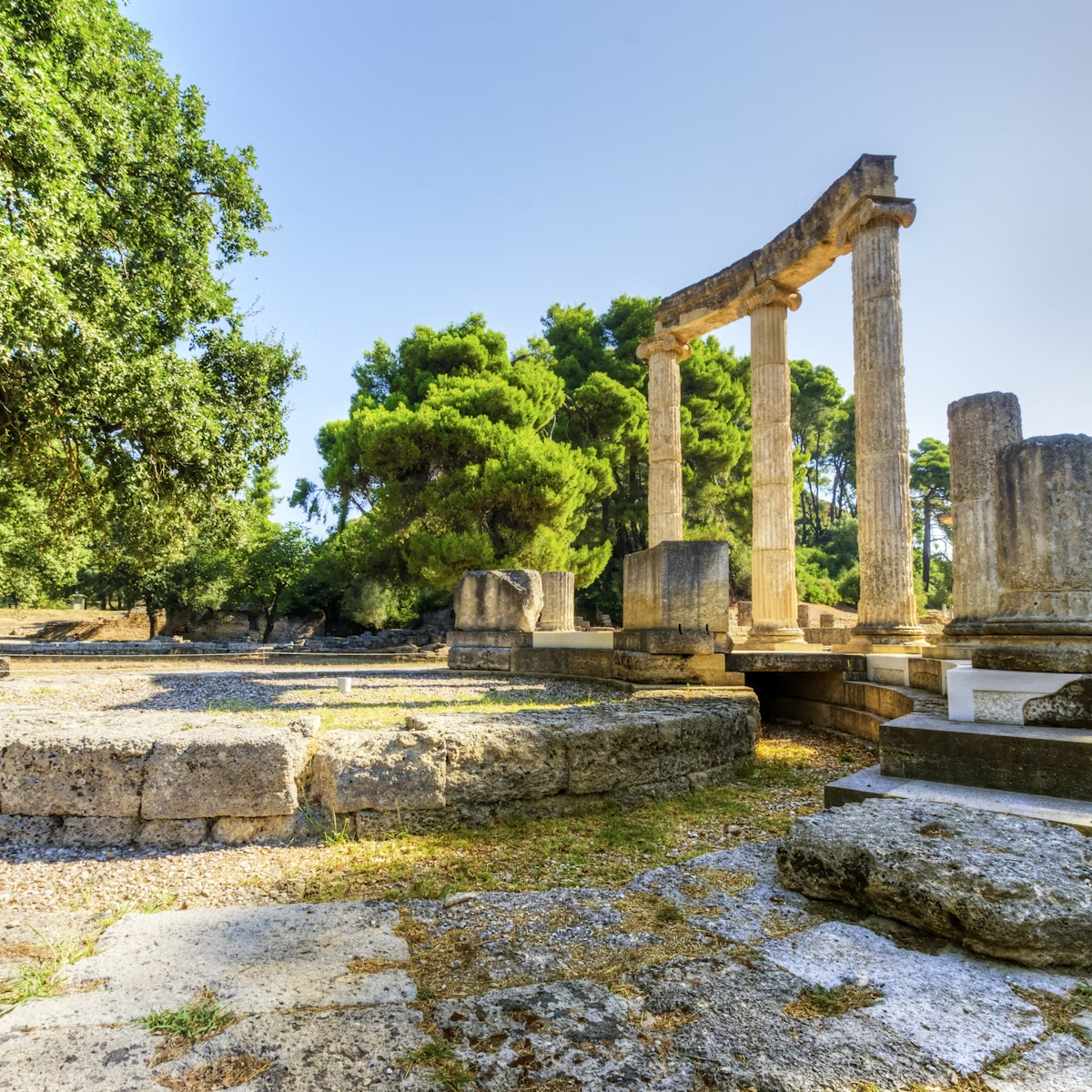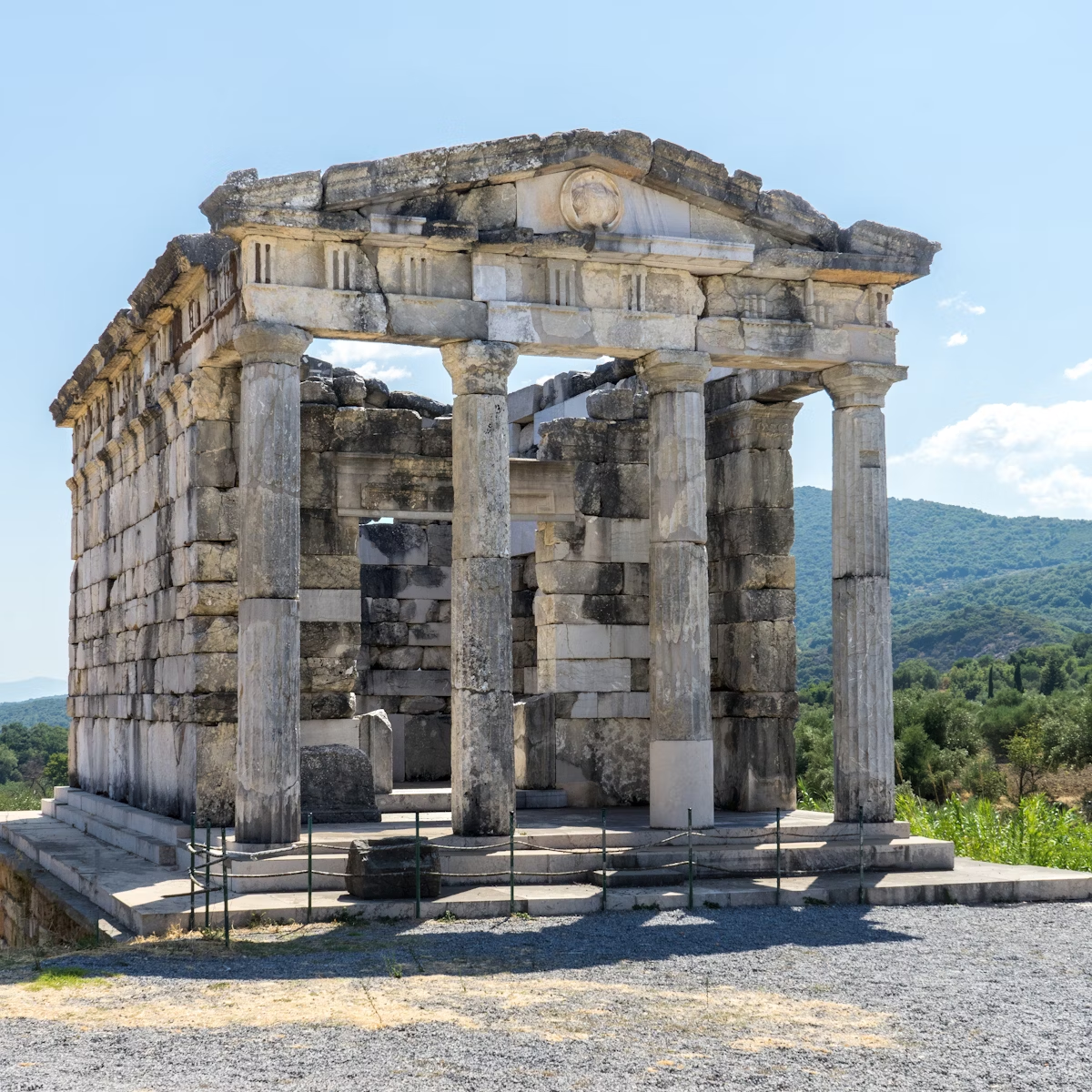Situated on a wild, isolated spot overlooking rugged mountains and hills, this World Heritage–listed temple is one of Greece’s most atmospheric archaeological sites. The striking, well-preserved temple is robbed of some of its splendour and immediate visual impact by the giant steel-girded tent that's been protecting it from the elements since 1987 (for restoration purposes), but it’s magnificent all the same. It's located 14km southwest of Andritsena at Vassai (Bassae).
The temple was built in 420 BC by the people of nearby Figalia, who dedicated it to Apollo Epicurus (the Helper) for delivering them from the plague. Designed by Iktinos, the architect of the Parthenon, the temple combines Doric and Ionic columns and a single Corinthian column – the earliest example of this order. The ruins of an earlier Archaic temple stand alongside.
The temple's most prominent decoration – a marble frieze depicting battles between Greeks and Amazons, and between Lapiths and Centaurs – was spirited away in 1814 by 'archaeologists' who procured it from Greece's Ottoman rulers and sold it to the British Museum, where it is currently displayed.
Within the protective tent, you can admire the structure from the outside. A long video provides some background to the restoration. Outside, the grounds are lovely and make for a great picnic spot.
No public buses run to Vassai. A return taxi from Andritsena, including waiting time, costs around €40.






